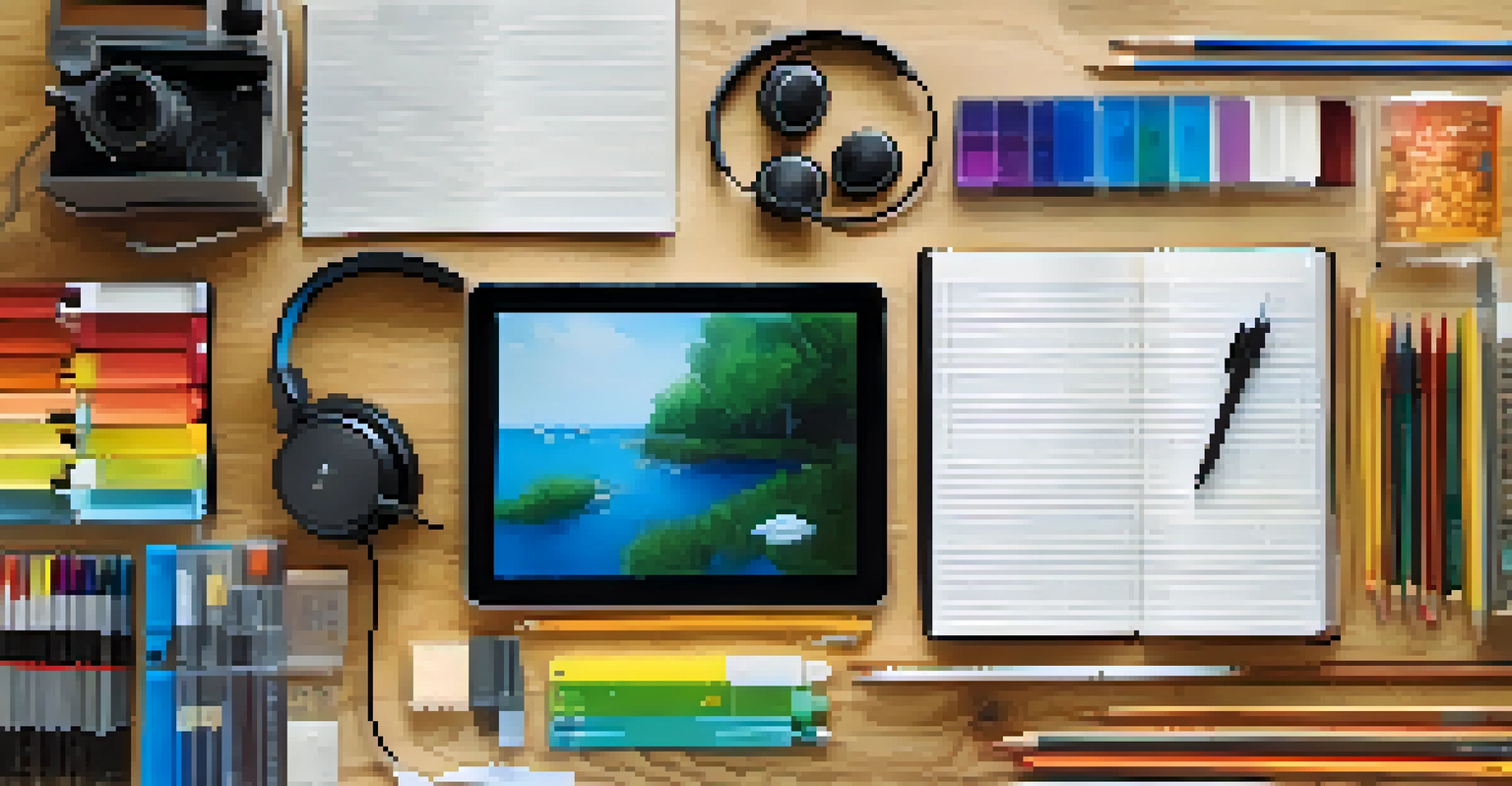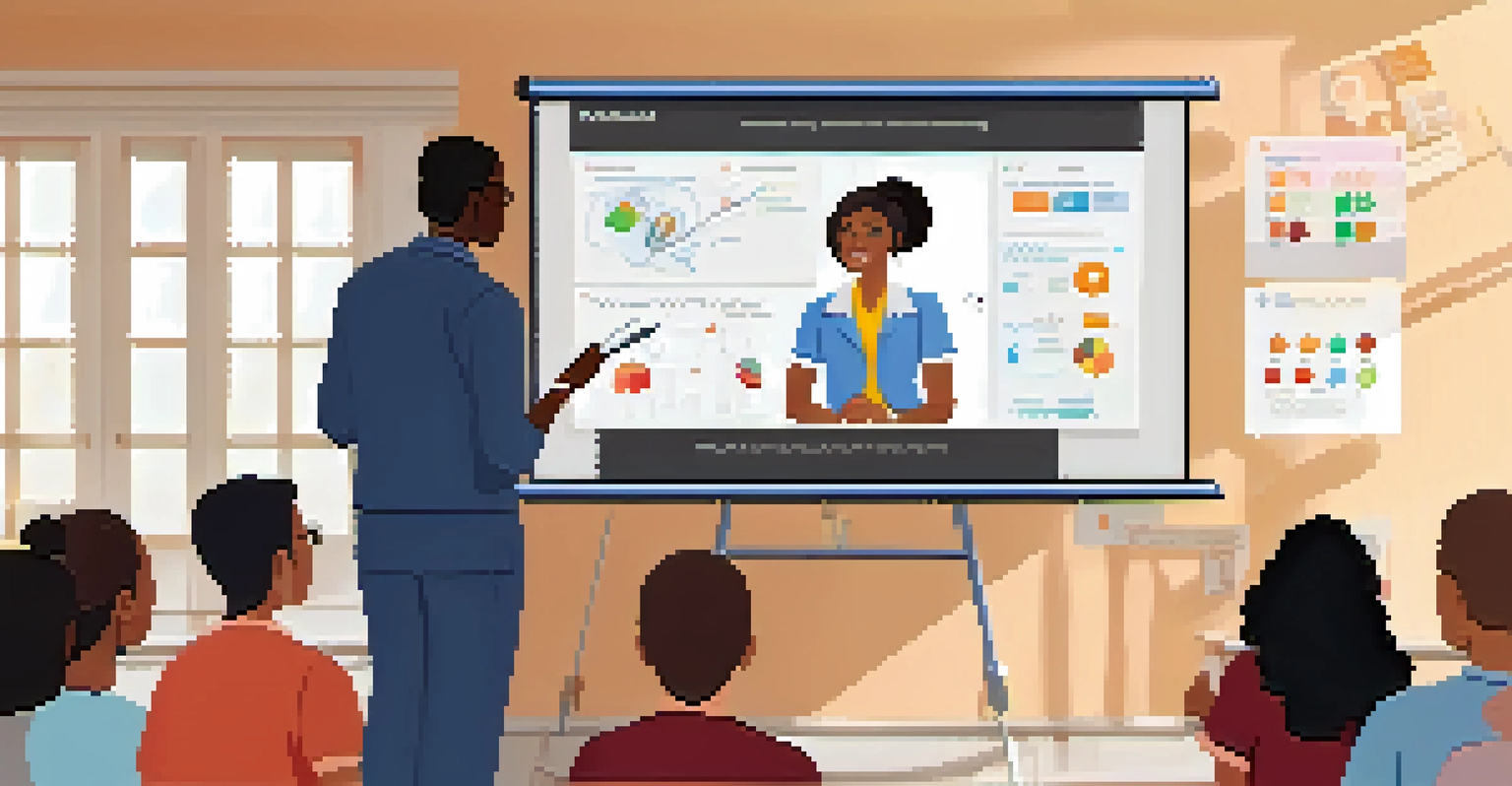Understanding Learning Styles in Remote Education Settings

What Are Learning Styles and Why Do They Matter?
Learning styles refer to the various ways individuals prefer to absorb, process, and retain information. Understanding these styles can help educators tailor their approaches to meet the diverse needs of students, especially in remote education settings. By recognizing that not all students learn the same way, we can create a more inclusive and effective learning environment.
Tell me and I forget. Teach me and I remember. Involve me and I learn.
For example, some students may thrive with visual aids like charts and videos, while others might prefer auditory resources, such as podcasts or lectures. This recognition allows educators to diversify their teaching methods, ultimately leading to better engagement and knowledge retention. In remote settings, where personal interaction is limited, adapting to these styles becomes even more critical.
In essence, acknowledging learning styles is about personalizing education. When students see that their unique ways of learning are valued, they are more likely to participate actively and feel connected to the material, improving their overall educational experience.
The Major Learning Styles Explained
The primary learning styles are visual, auditory, reading/writing, and kinesthetic. Visual learners benefit from diagrams, infographics, and videos, making visually driven content essential in remote education. Auditory learners, on the other hand, grasp concepts better through discussions and listening, so incorporating audio elements can enhance their experience.

Reading/writing learners prefer written text; they thrive on reading articles, taking notes, and engaging with written materials. For these learners, providing comprehensive written content and encouraging reflection through writing can be beneficial. Lastly, kinesthetic learners engage best through hands-on activities. In a remote setting, this could mean incorporating virtual labs or interactive simulations.
Understanding Learning Styles
Recognizing diverse learning styles allows educators to tailor their teaching methods, improving student engagement and retention.
Understanding these distinct styles is key in remote education because it helps educators tailor their lesson plans. By including a mix of resources that cater to each style, teachers can create a balanced and engaging curriculum that resonates with all students.
Identifying Your Learning Style
Identifying your preferred learning style can significantly enhance your educational journey. There are various online quizzes and assessments available that can help pinpoint your style, offering insights into how you learn best. Knowing your learning style empowers you to seek out resources and strategies that align with your strengths.
There is no one-size-fits-all approach to education; we must tailor our teaching methods to the diverse needs of our learners.
For instance, if you discover you're a visual learner, you might focus on videos and infographics when studying new material. Conversely, if you're an auditory learner, you could prioritize listening to lectures or joining study groups where discussion is encouraged. This self-awareness allows you to take charge of your learning experience.
Ultimately, understanding your learning style isn't just about academic success; it fosters a sense of agency and confidence in your educational pursuits. The more you know about how you learn, the better equipped you are to navigate the challenges of remote education.
Implementing Learning Styles in Remote Education
Incorporating various learning styles into remote education requires thoughtful planning and creativity. Educators can blend different resources, such as videos, articles, podcasts, and interactive assignments, to cater to a broader audience. This blended approach keeps students engaged and allows them to interact with the material in multiple ways.
For example, a lesson might start with a short video to introduce a concept for visual learners, followed by a discussion or podcast episode for auditory learners. Assignments could then include a written reflection for reading/writing learners, along with a hands-on project for kinesthetic learners. This ensures that all students have a chance to engage with the content meaningfully.
Identifying Your Learning Style
Knowing your preferred learning style empowers you to choose resources that align with your strengths, enhancing your educational experience.
By actively implementing diverse learning styles, educators can create a dynamic and inclusive remote learning environment. This not only enhances student engagement but also fosters a sense of belonging, which is crucial in a virtual setting.
Challenges of Adapting Learning Styles in Remote Education
While understanding and applying learning styles has its benefits, there are also challenges to consider. One significant hurdle is the limitation of resources available in a remote setting. Not every educator may have access to a variety of materials that cater to all learning styles, making it difficult to implement a comprehensive approach.
Additionally, remote education often relies heavily on technology, which can be a barrier for some students. For instance, a student with limited internet access may struggle to engage with video content, which is essential for visual learners. This disparity can lead to frustration and disengagement, impacting the overall learning experience.
To overcome these challenges, educators must be resourceful and creative. Finding alternative ways to deliver content, such as providing downloadable resources or offering asynchronous options, can help bridge the gap and ensure that all students have equal opportunities to learn.
Leveraging Technology for Diverse Learning Styles
Technology plays a crucial role in accommodating different learning styles in remote education. Various platforms and tools are designed to engage learners in unique ways, from video conferencing software to interactive learning management systems. By leveraging these technologies, educators can create a more flexible and responsive learning environment.
For instance, platforms like Kahoot! allow educators to create quizzes that appeal to visual learners through vibrant graphics and engaging formats, while also providing auditory feedback through sound effects. Similarly, tools like Padlet enable collaborative efforts, allowing students to interact with the material and each other in a way that caters to kinesthetic learners.
Challenges in Remote Education
Adapting learning styles in remote education faces challenges such as limited resources and technology access, requiring creativity from educators.
Utilizing technology effectively not only enhances the learning experience but also fosters a sense of community among students. When students can engage with the material through their preferred learning styles, they are more likely to feel connected and invested in their education.
The Future of Learning Styles in Remote Education
As remote education continues to evolve, so too will our understanding of learning styles. New research and technological advancements will likely lead to more personalized and adaptive learning experiences. This evolution has the potential to make education more accessible and effective for diverse learners.
Educators will increasingly be equipped with tools and resources that enable them to tailor their approaches, creating a more responsive and engaging learning environment. Future developments may also include artificial intelligence that can adapt content delivery based on a student's learning style, further enhancing individual learning experiences.

Ultimately, the future of learning styles in remote education is promising. By prioritizing a student-centered approach and embracing technological innovations, we can continue to improve educational outcomes for all learners, regardless of their preferred learning style.